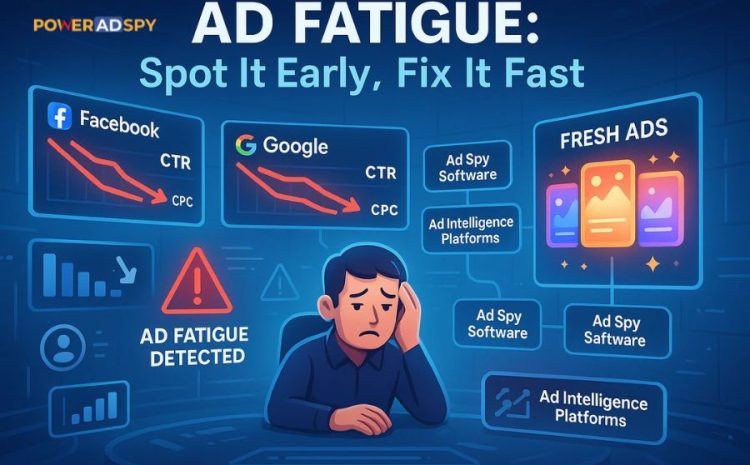What Causes Ad Fatigue & How to Fix It Quickly?
Your click-through rates (CTR) might be dropping, your cost-per-click (CPC) going up, and conversions starting to decline. If this sounds familiar, you’re likely experiencing ad fatigue, a common yet frustrating challenge for digital marketers.
Regardless of whether you’re running ads on Facebook, Google, or Instagram, showing the same ad to the same audience too often will eventually cause fatigue. The result? People start ignoring your ads, engagement drops, and your ad spend becomes less effective.
Ad fatigue isn’t just a minor hiccup; it’s a silent killer of advertising ROI. Left unchecked, it can drain your budget while delivering diminishing returns. But the good news is that it’s 100% fixable with the right strategies.
Don’t want to read? Listen to our podcast here:
In this comprehensive guide, you’ll learn:
Ad Fatigue: What It Is and How It Hurts Your Ads.
The main causes of ad fatigue, especially in Facebook ads
How to spot the signs early
Actionable solutions to fix ad fatigue quickly
How tools like ad spy software and ad intelligence platforms help you stay ahead of the curve
Let’s dive into understanding this problem and, more importantly, how to solve it fast.
What Is Ad Fatigue?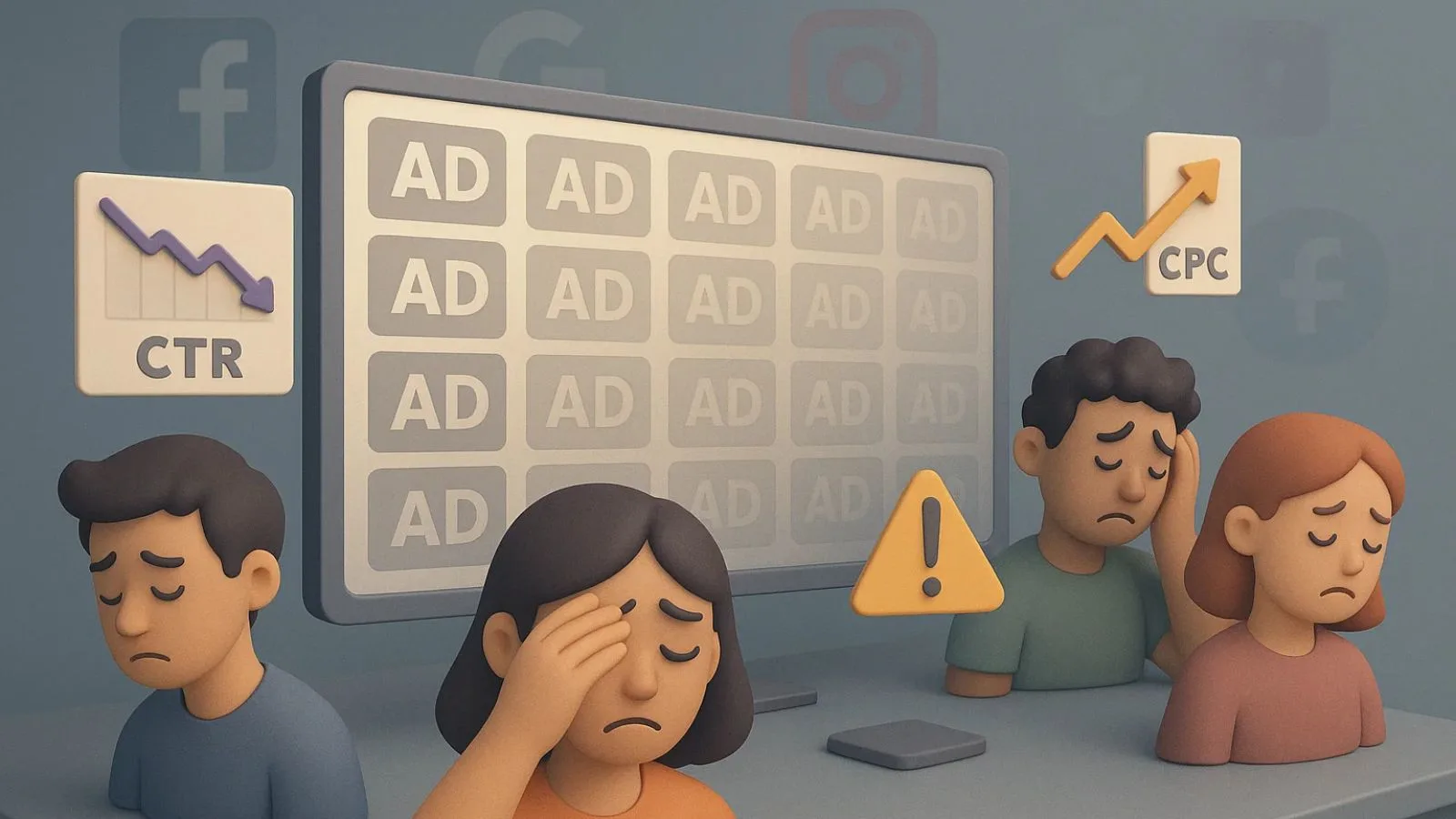
Ad fatigue is when your audience sees the same ad too many times and eventually stops paying attention to it. As a result, the performance of your ads starts to decline—click-through rates (CTR) drop, conversion rates plummet, and costs per click (CPC) or cost per acquisition (CPA) rise.
In simple terms, ad fatigue is the digital version of banner blindness. When users are repeatedly exposed to the same image, video, or message, its impact diminishes. Instead of grabbing attention, it becomes background noise.
How Does Ad Fatigue Affect Your Campaigns?
Declining Engagement: Fewer likes, comments, shares, and clicks.
Increased Costs: Facebook, Google, or other platforms charge more as your relevance score decreases.
Lower Conversion Rates: Even if your ads are shown, people stop taking action.
Wasted Budget: You spend more but get less in return.
Common Signs of Ad Fatigue:
CTR drops significantly over time.
CPC and CPM (Cost Per Mille) start increasing.
Conversion rates shrink even when traffic remains steady.
If your frequency score (on platforms like Facebook) exceeds 3 or 4, it typically means your audience has seen your ad too many times.
Where Does Ad Fatigue Occur?
Ad fatigue can show up on any platform, but it’s most noticeable on high-traffic, algorithm-driven channels. Here’s how it plays out:
Facebook Ads
Heavy targeting means the same users see your ads repeatedly
Engagement drops when creatives aren’t refreshed regularly
Instagram Ads
Visually driven platform—repetition stands out fast
Users quickly scroll past content they’ve seen before
Google Display & YouTube Ads
Banner and video ads often follow users across the web
Repetitive exposure can lead to banner blindness or skipped videos
LinkedIn Ads
Smaller, niche audiences = higher frequency per user
Professionals tend to tune out repeated messages quickly
No matter the platform, if your audience sees the same creative too often, ad fatigue becomes inevitable. The more popular the platform, the faster it can happen, making creative variety and rotation essential for campaign success.
Ad Fatigue Statistics (Why You Should Care)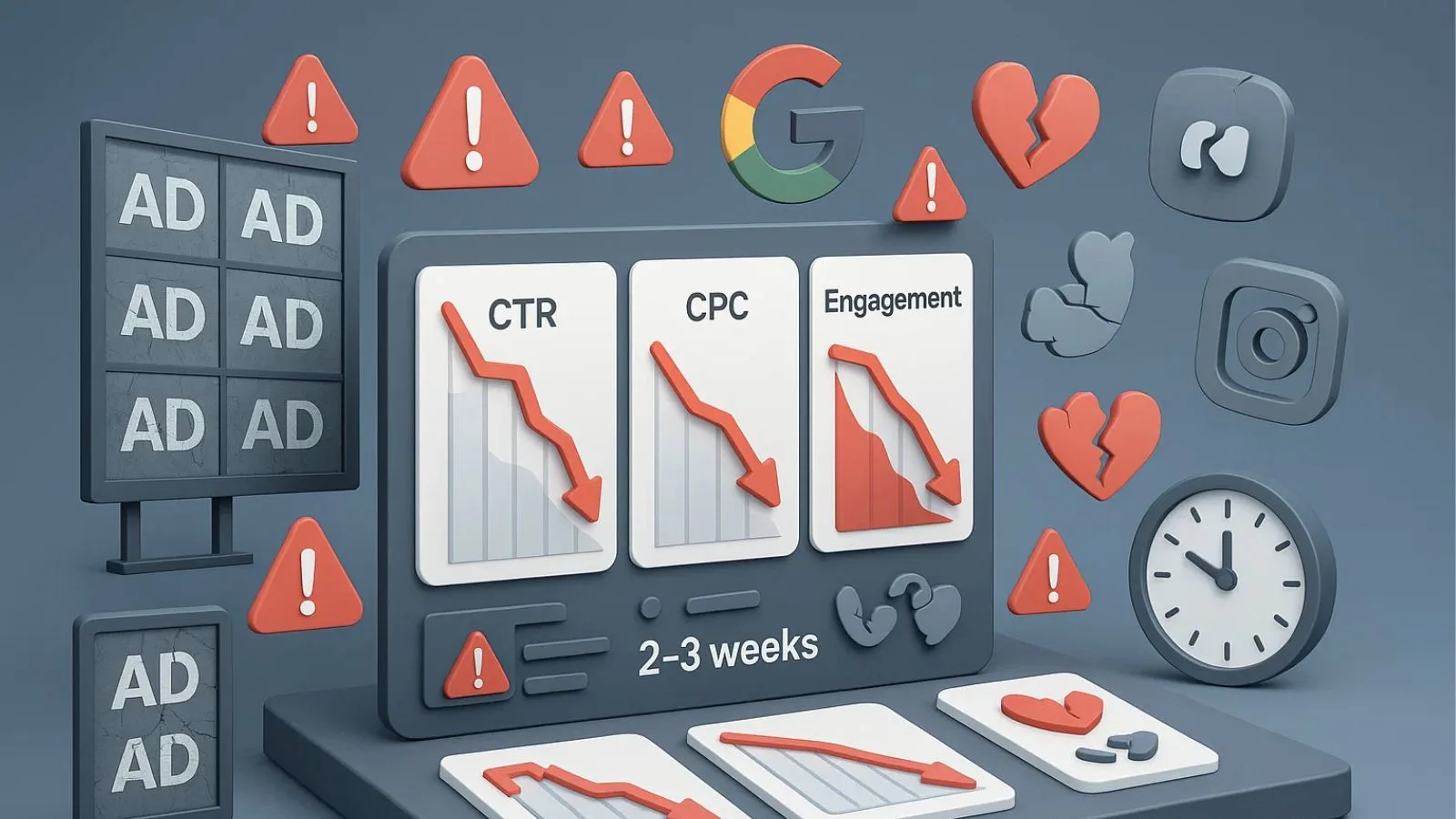
If you think ad fatigue is just a minor bump in your campaign’s lifecycle, think again. Ad fatigue is more common and more damaging than most advertisers realize. Numbers don’t lie, and the statistics around ad fatigue paint a clear picture of how it impacts campaigns across platforms like Facebook, Google, Instagram, and more.
Key And Fatigue Statistics:
- CTR drops by an average of 41% after an ad reaches a frequency score of 4 or more.
(Source: Facebook Ads Benchmark Reports) - Ad costs increase by 30-50% when the same creative runs beyond 2-3 weeks without changes.
- 70% of advertisers report a significant decline in campaign performance due to ad fatigue within the first month.
- Audiences exposed to the same ad five or more times are 25% less likely to take action compared to first-time viewers.
- Campaigns that refresh creatives every 10-14 days experience 60% better engagement than those that don’t.
Platform-Specific Stats:
On Facebook Ads, a frequency score beyond 3.5 typically triggers a noticeable decline in engagement.
On Google Display Network (GDN), ads shown repeatedly to the same audience over a week experience a 20-30% lower CTR.
Instagram Stories ads experience fatigue 25% faster than feed ads because people swipe through them quickly.
What This Means for You:
These numbers show that ad fatigue isn’t just an idea; it’s real and can cost you money. Without proactive strategies, your ad spend will leak money while performance nosedives. Whether you’re running small-scale campaigns or handling large budgets, ignoring ad fatigue could mean the difference between scaling profitably or losing traction entirely.
What Causes Ad Fatigue?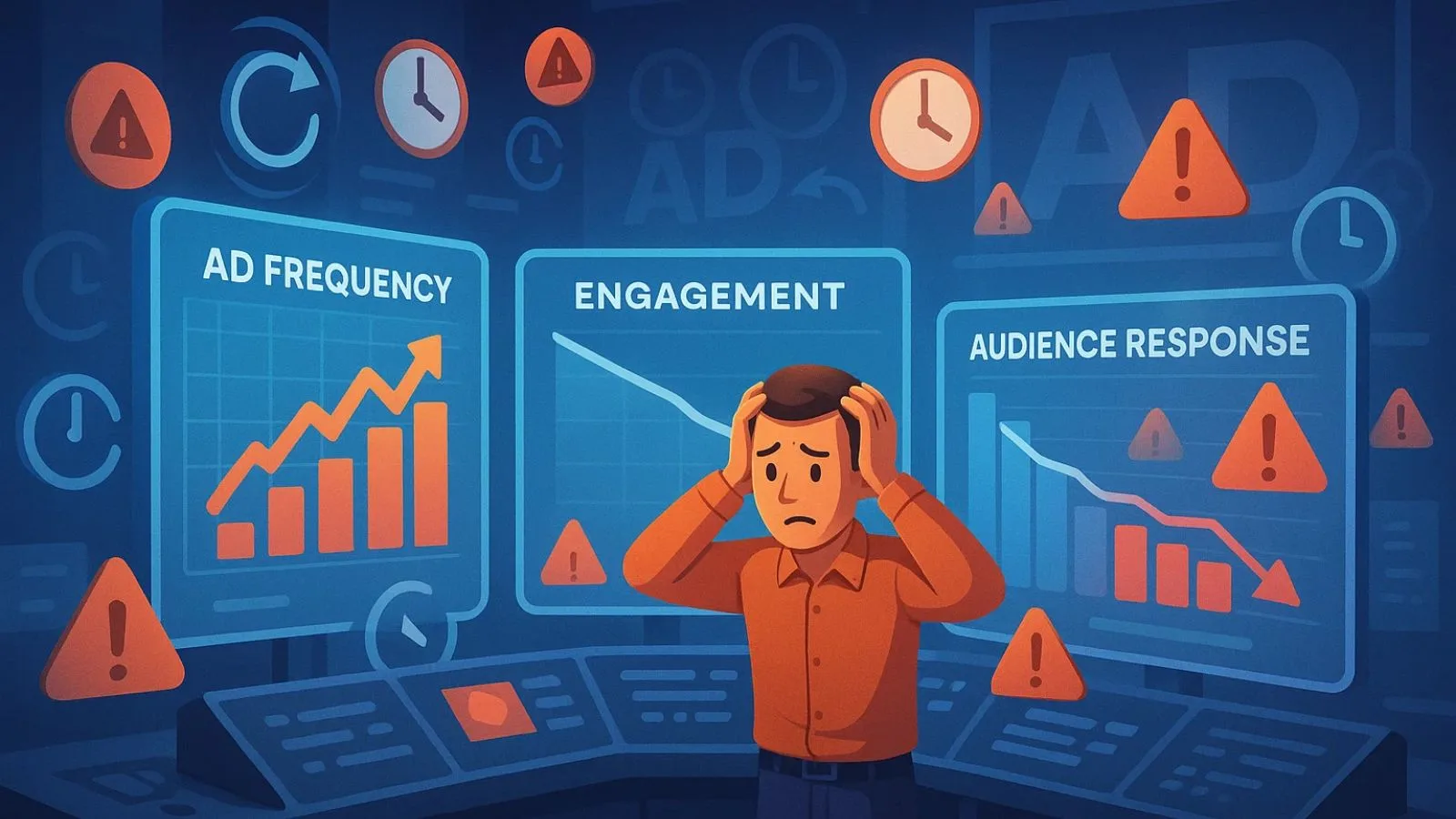
Ad fatigue doesn’t happen by accident; it’s a direct result of how your campaigns are structured, how often your ads are shown, and how your audiences respond over time. Understanding the causes of ad fatigue is the first step to preventing it.
Here are the most common causes of ad fatigue across Facebook, Instagram, Google, and other platforms:
1. Repetitive Ad Creatives
When you run the same image, video, or copy for too long, audiences grow tired of it. If they’ve seen it once, twice, or ten times, the initial curiosity fades. What was once attention-grabbing becomes invisible.
Same headlines, colors, formats, and calls to action.
Audiences subconsciously skip past ads they recognize too well.
Example: Running the same discount ad banner for weeks straight without a change.
2. High Audience Frequency
When your ad frequency (the number of times a person sees your ad) becomes too high, people start ignoring it.
On platforms like Facebook, a frequency score above 3–4 is often the threshold where fatigue starts.
Smaller audiences reach this threshold much faster than broader audiences.
Example: A local business targeting the same zip code with a limited audience quickly exhausts its pool.
3. Narrow Audience Targeting
Overly restrictive targeting (small interest groups, specific age brackets, or hyper-local locations) limits how many people see your ad.
Your ads cycle through that same group repeatedly, causing quicker burnout.
Example: Targeting only “new moms aged 25-30 in Delhi” for weeks—this small audience quickly tires of seeing the same content.
4. Lack of Creative Rotation
If you’re not cycling through different ad creatives, fatigue is inevitable.
Using the same offer and visuals for too long.
No A/B testing or creative refreshes lead to faster disengagement.
Solution Hint: Brands that pre-plan creative swaps every 10-14 days report higher engagement.
5. Budget Misalignment
Spending a high daily budget on a small audience leads to showing your ads too often.
Platforms push the ad aggressively, leading to fatigue faster than intended.
Example: A $500 daily budget targeted at an audience of just 10,000 people will burn out that audience within days.
6. Algorithm Distribution Limits
Platforms like Facebook and Google optimize ad delivery to audiences who are most likely to engage.
Once that prime audience is exhausted, the platform shows the ad to less-engaged users, which often results in poor performance.
This algorithm’s behavior can unintentionally accelerate fatigue.
7. Irrelevant or Overused Offers
Even if you change the visuals, repeating the same discount, limited-time offer, or message can still cause your audience to lose interest.
Example: “50% off” blasted every week loses its urgency and impact.
8. Seasonal or Trend Burnout
Running ads based on expired trends, holidays, or events after they’ve passed leads to natural fatigue.
The relevance decreases, and so does the interest.
Summary of Causes:
Repetitive visuals
High frequency
Small targeting groups
Not refreshing creatives
Mismatched budgets
Algorithm saturation
Offer overuse
How To Detect Ad Fatigue?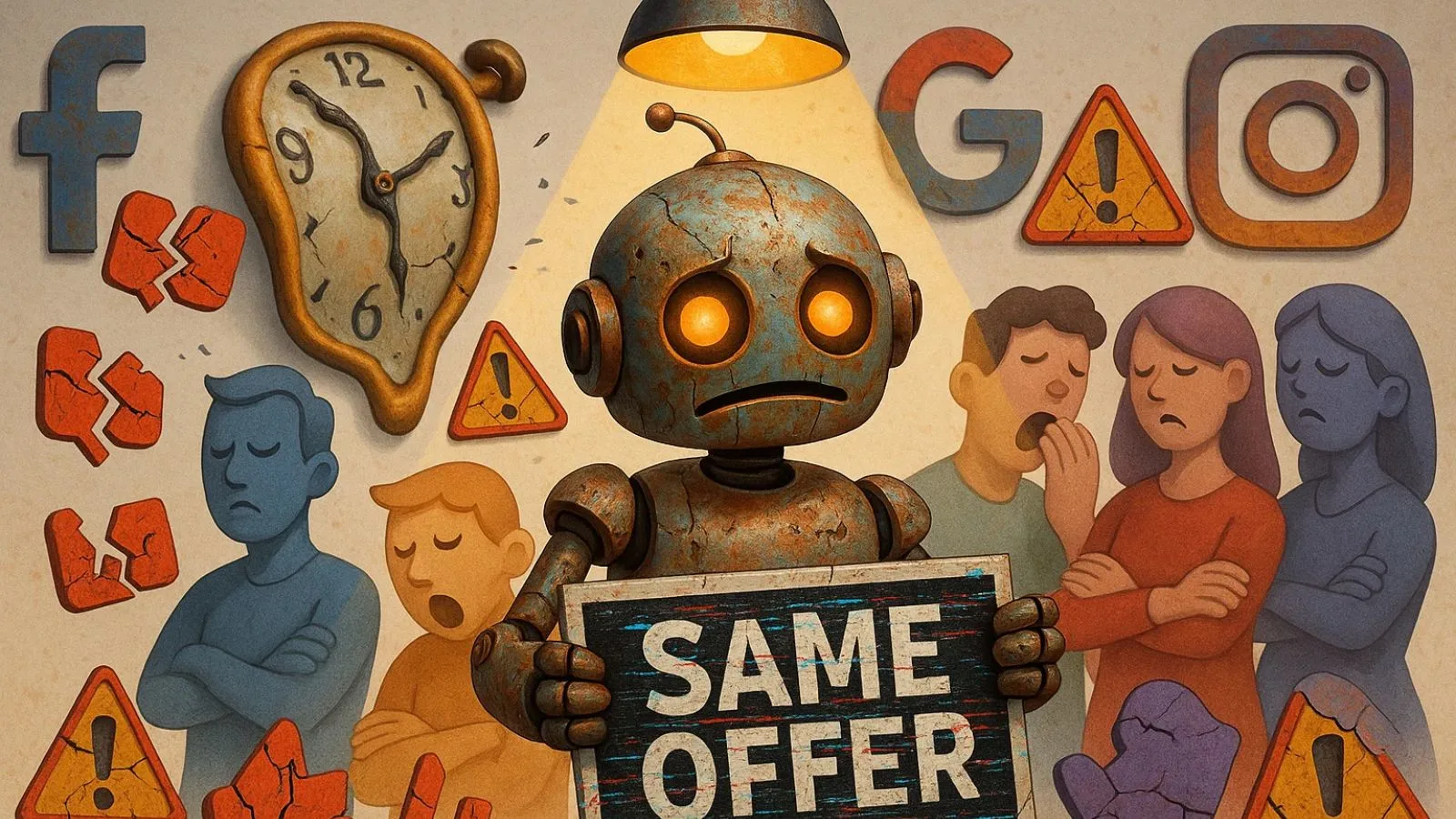
To fix ad fatigue, you first need to catch it early. The sooner you recognize the warning signs, the faster you can act to save your campaign performance and your budget.
Here’s how to easily detect ad fatigue across platforms like Facebook Ads, Google Ads, Instagram, and more.
Key Indicators of Ad Fatigue:
1 Drop in Click-Through Rate (CTR)
One of the first and clearest signs.
If your CTR is steadily declining while impressions stay consistent, it’s a strong indicator that your audience is losing interest.
Example: CTR drops from 2.5% to 0.8% within 7-10 days of running the same ad.
2 Increase in Cost Per Click (CPC) or Cost Per Mille (CPM)
As engagement decreases, platforms charge more to deliver your ads.
You’ll notice rising CPC or CPM compared to earlier campaign days.
Example: CPM increases from ₹150 to ₹280 over a few days, a sign of declining relevance.
3 Drop in Conversion Rates
Lower CTR leads to fewer visitors, but a sharper-than-usual drop in conversions (signups, purchases, leads) is an unmistakable sign.
Even if traffic is coming in, it’s less qualified or less engaged.
4 High Frequency Score
Facebook/Instagram: If frequency goes above 3.5 – 4, it means your audience has seen the same ad multiple times.
Google Display/YouTube: Fatigue starts showing after 5+ impressions per user within a short timeframe.
Tip: Monitor the Frequency metric closely in Ads Manager. It’s the clearest technical signal of fatigue.
5 Declining Engagement Metrics
Fewer likes, shares, comments, and reactions even when reach stays high.
Signals that users are glossing over your ads instead of interacting.
6 A sharp decline in ROAS (Return on Ad Spend).
If you notice that your sales, leads, or conversions are getting expensive fast despite no change in targeting, budget fatigue might be the culprit.
How to Check for Fatigue on Platforms:
Facebook & Instagram Ads Manager:
Check: CTR, Frequency, CPM, CPC, ROAS
Watch for: Frequency >3.5 + falling CTR.
Google Ads:
Check: Impression frequency per user (Display/YouTube)
Watch for: CTR decline + higher CPC.
TikTok, Snapchat, LinkedIn:
The same pattern shows up: high frequency with lower CTR and less engagement.
Pro Tip: Use Ad Spy Tools & Ad Intelligence Software
Tools like PowerAdSpy help you:
See how often competitors rotate creatives.
Spot trends early.
Avoid mistakes like overusing the same ad styles.
These tools don’t just help with fatigue, they help keep your campaigns competitive by showing you which ads in your niche are thriving and which are wearing out.
Pro Tip: Detect Ad Fatigue Early with PowerAdSpy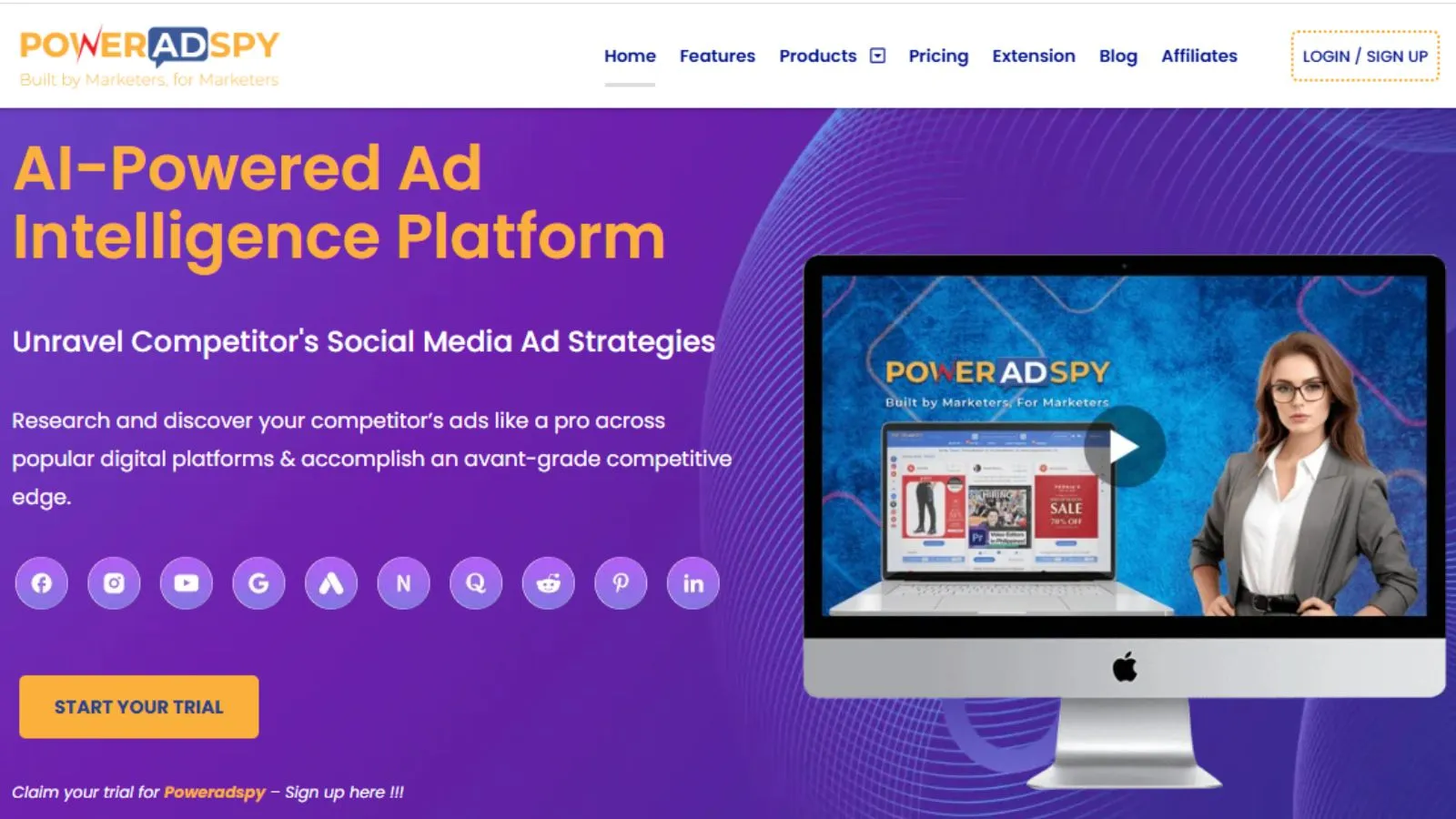
One of the most effective ways to stay ahead of ad fatigue is by studying your competitors’ ads and understanding how often they change creatives, offers, and formats. This is where PowerAdSpy, a powerful ad intelligence and spy tool, becomes invaluable.
How PowerAdSpy Helps Combat Ad Fatigue:
Monitor Competitor Ads: See exactly how long your competitors have been running specific ads. If you notice an ad has been live for a short time before being replaced, it’s a clear signal that even top advertisers refresh regularly to avoid fatigue.
Track and Longevity: Find out the start and end dates of competitor ads. This shows how frequently successful advertisers rotate creatives.
Identify High-Engagement Creatives: Filter ads by highest engagement (likes, shares, comments). This helps you learn what style or format keeps audiences engaged longer without fatigue.
Discover Trending Formats: Whether it’s video, carousel, or story ads, PowerAdSpy shows what’s currently trending in your niche, so you avoid using stale formats.
Ad Placement Insights: Understand which placements (Feed, Stories, Right Column, etc.) are working best and where fatigue is hitting faster.
Competitor Refresh Patterns: By analyzing when your competitors switch or update ads, you can establish a creative refresh timeline for your campaigns.
Ad Popularity & Impressions:
PowerAdSpy also highlights how popular an ad is based on engagement and impression data. This gives you deeper insights into which ads are truly resonating with audiences and which might be hitting the fatigue zone sooner.
Bottom Line:
PowerAdSpy doesn’t just help you spy, it helps you understand how top-performing advertisers manage creative fatigue, giving you a roadmap to avoid it yourself.
How to Fix Ad Fatigue Quickly (Simple Solutions)?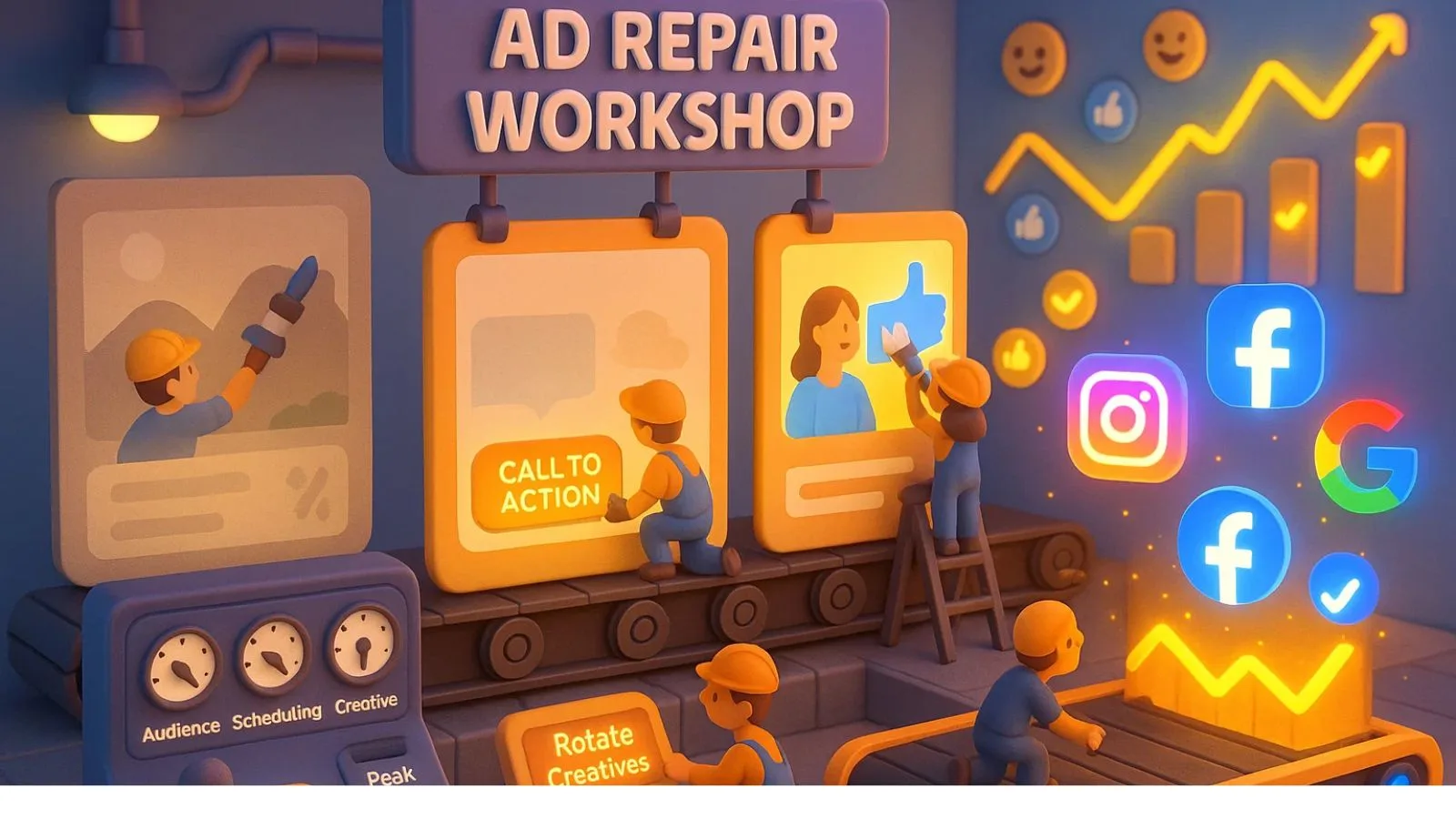
Ad fatigue drains campaign performance, but fixing it is easier than you think. Here’s how to update your ads and quickly get better results:
- Refresh Creatives Frequently
Update your images, videos, headlines, and copy often to prevent ad fatigue. Even small changes in colors, formats (carousel, video, image), or CTAs can make a big difference.
Pro Tip: Rotate creatives every 7–14 days.
- Expand or Rotate Audiences
Avoid showing the same ad to the same group repeatedly.
Use broader interests, lookalike audiences, or geo-expansion to prevent fatigue.
- Use Ad Scheduling
Run ads during peak hours instead of 24/7. This limits overexposure and extends ad life.
- Plan Creative Rotation
Have 3-5 versions ready and swap them out before performance drops—ideally when frequency hits 3.5+.
- Leverage PowerAdSpy
Check how often top advertisers refresh creatives.
Discover trending formats and angles.
Avoid overused designs and messages.
→ Stay one step ahead of fatigue.
- Adjust Budgets
If targeting small audiences, reduce budgets to avoid burnout or scale your audience to match spend.
- Change Offers or Angles
Test new messaging:
Discounts → Bonuses
Product-focused → Customer testimonials
Problem-solution storytelling
Quick Recap:
Refresh creatives
Rotate audiences
Schedule smartly
Adjust budgets
Change offers
Spy with PowerAdSpy to stay fresh
Read more
What is Competitor Ads Analysis and Why is it Important | 7 Best Practices
What Is An Ad Impression And Why Is It Important?
Top 6 Performance Max Best Practices That Skyrocket Your Ads
Conclusion
Ad fatigue is a silent killer for digital campaigns, but it’s not permanent. By spotting the signs early and applying simple strategies like refreshing creatives, adjusting audiences, and using tools like PowerAdSpy, you can regain performance quickly. Stay proactive, keep testing, and remember a fresh ad is a profitable ad.
FAQs
1. What is ad fatigue?
Ad fatigue happens when audiences see your ad too often, leading to declining engagement, clicks, and conversions.
2. What causes ad fatigue in Facebook ads?
Repetitive creatives, high frequency, small audience size, and lack of creative rotation are the main causes.
3. How do I know if my ads have ad fatigue?
“Look out for signs like lower CTR, higher CPC or CPM, frequency over 3.5, and fewer conversions.
4. How can PowerAdSpy help with ad fatigue?
PowerAdSpy lets you track competitor ads, see how often they refresh creatives, and spot trending formats to keep your ads fresh.
5. How often should I change my ads to avoid fatigue?
Ideally, refresh creatives every 7–14 days, or when the frequency score crosses 3.5.

